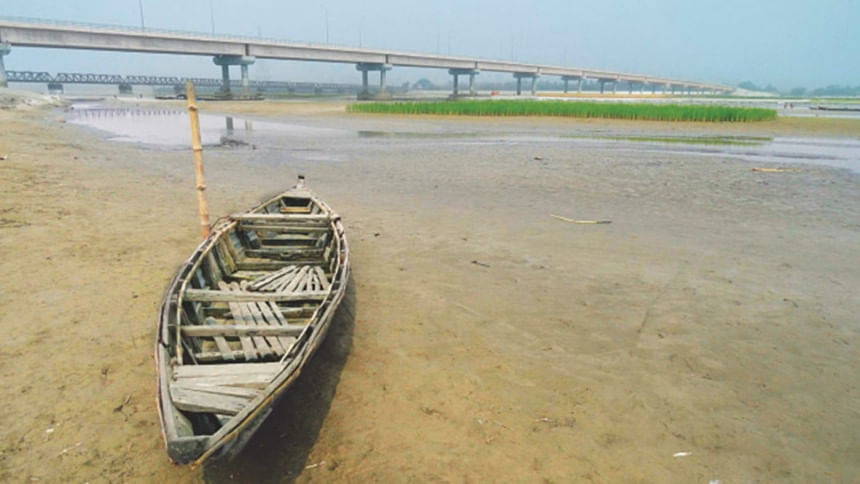News Flash

Shafiqul Islam Bebu
KURIGRAM, Oct 30, 2025 (BSS) - The Teesta River - once the lifeline of northern Bangladesh – is nearly dying and agriculture and irrigation in the region have come to a standstill, leaving farmers in distress.
Once a mighty, flowing stream, it now lies dry and barren, exposing vast stretches of sandbanks.
According to the Water Development Board (WDB), the average water flow at the Teesta Barrage Point over the past 11 days has been only 17,000 cusecs, less than half of the normal flow. The river’s depth has nearly halved, its bed is drying up, and the groundwater table is decreasing gradually.
As a result, agriculture in the northern districts — which heavily depend on the Teesta Barrage for irrigation — faces a severe crisis. Crops such as paddy, maize, jute, and sesame are drying out in the fields long before maturity.
Experts warn that irrigation activities during the upcoming Rabi season may be gravely disrupted if the water shortage persists.
“Sedimentation has filled the Teesta’s bottom, causing the water level to fall drastically. Without scientific re-drainage, a permanent solution is impossible,” said Dr. Tuhin Wadud, a river researcher from Rangpur. “If this situation continues, the northern region could gradually turn into a desert.”
The Teesta’s behavior, however, is drastically different during the monsoon. Heavy rainfall and water inflow from upstream India often cause sudden surges, leading to devastating floods and river erosion. Thousands of homes are washed away, and livestock and wildlife perish in the strong currents.
WDB data shows that more than 20,000 families have been displaced by Teesta river erosion over the past decade. Severe erosion has affected about 35 kilometers of the riverbank, destroying over a hundred homes in Rajarhat, Gangachara, and Ulipur upazilas.
A 350-meter stretch of the Teesta Bridge protection dam at Mahipur in Lalmonirhat has also collapsed into the river.
In response to the crisis, residents of five northern districts — Nilphamari, Rangpur, Lalmonirhat, Kurigram, and Gaibandha — have launched a grassroots movement under the banner “Save Teesta, Save North Bengal.”
Environmental groups and locals are organizing human chains and sit-ins, demanding immediate measures to restore the river’s flow.
“Teesta is not just a river — it is the heartbeat of North Bengal’s life and culture,” said one activist. “If the Teesta dies, our agriculture and livelihoods will perish with it.”
Meanwhile, Syeda Rizwana Hasan, Advisor to the Ministry of Water Resources, confirmed that implementation of the Teesta Master Plan will begin in January 2026. The project, estimated to cost Taka 12,000 crore, will receive Taka 6,700 crore in loan assistance from China.
Authorities hope the initiative will help restore the river’s navigability and secure sustainable water management for the northern region.